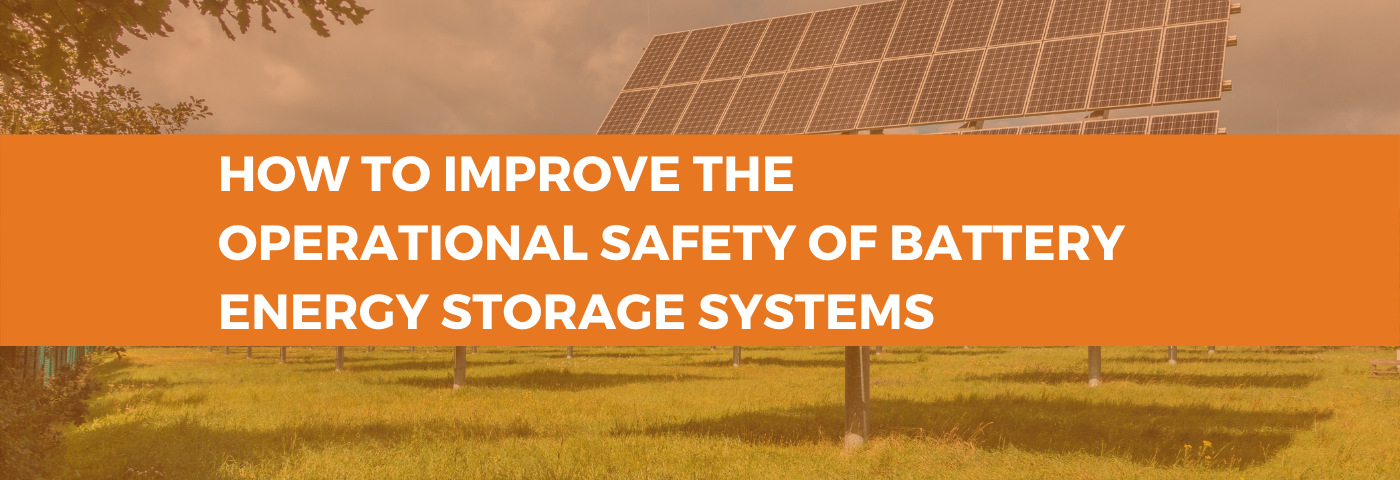Utility-scale battery energy storage systems (BESS) are seeing greater use as part of the UK’s electricity network, with interest growing in the integration of storage systems with renewable technologies, such as wind and solar.
However, batteries are becoming larger, more complex and energy dense. Not to mention the Lithium-ion (Li-ion) battery chemistry involved. These attributes can lead to significant fire risks which are exasperated as today’s buyer is typically not an energy specialist, and is just as likely to be a property developer, council or university.
It is vital that users improve their understanding of these systems and are able to mitigate danger. This article provides advice on applying the learnings from established renewable technologies, such as wind, to improve the operational safely of BESS projects.
By Alistair Parlett, Head of Asset Management at Natural Power
Key considerations for operational safety
To effectively manage operational safety, we need to look at four key areas: electrical safety, live working, emergencies, and work control.
Electrical safety
You will need to categorise the location of the battery energy storage system as a high voltage (HV) substation. This is due to the presence of HV switchgear, transformers and cable systems. You must put suitable electrical safety rules and security arrangements in place to make sure the battery energy storage system is compliant with the applicable Knowledge is power: taking the learnings from onshore wind asset management and applying it to operational safety in BESS legislation. This includes the electricity at work regulations and the electricity safety, quality and continuity regulations. Only authorised personally should have access to the BESS area, so you will need to think about what happens when sub-contractors or others visit. Electrical safety rules must also address the requirements for safety co-ordination across the control boundary with the distribution network operator (DNO), transmission licensee (TL), or another network operator.
Live working
Planned and reactive maintenance tasks associated with the battery installations will require work and testing on or adjacent to live low voltage (LV) apparatus. Only personnel qualified to do so should carry out these tasks. They should complete their work in accordance with specialised procedures and electrical safety rules. They should understand battery energy storage system technology; operating and maintenance procedures; and the application of the electrical safety rules. This will require formal training and authorisation. Specialist work procedures will require the use of live working techniques, tools and equipment, including suitably rated arcflash personal protective equipment. In addition, the weight of individual battery modules (the weight of a ‘cell’ may be 30-40kg each) means that personnel should use suitable lifting equipment to remove or replace battery modules.
Preparing for emergencies
There is a risk of fire in battery systems, and you must implement controls for normal operations and while carrying out maintenance. Although a regular planned inspection and maintenance programme and fixed fire suppression systems provide effective mitigation, the fire risk assessment for the location, and consultation with the local fire and rescue service should also inform the emergency response plan (ERP).
Two things are essential for early intervention in the case of emergencies: monitoring and immediate response. You should have continuous remote monitoring by a 24-hour control room (which may also act as a primary point of contact for stakeholders), and you need to have staff available and ready to go to a site immediately if there is an emergency. You also need to regularly test ERPs and emergency response procedures to make sure they are effective. This should take the form of exercises involving key stakeholders.
Work control
You need a robust work management process in place to make sure there is a safe system of work and that any work is carried out in accordance with health, safety and environmental legislation. This work management process will need to include access control procedures as well. A wide range of issues need consideration here, and the management systems and competency of personnel are important. The work management process should ensure that: → the work is clearly specified; → only skilled personnel perform the work; → suitable and sufficient risk assessment is performed, and method statements produced; → there are appropriate control measures implemented; → personnel are given the relevant and correct information to carry out the work safely; → the work is not interrupted by or disrupts other work; → monitoring and control are in place for high-risk tasks. For example, live working on LV apparatus.
Conclusion: Key considerations when operating a battery energy storage system
We have identified that there are a number of key considerations when operating a battery energy storage system project, especially when it comes to management and safety. Areas that house BESS projects are classified as HV substations. As such, access to and work on the BESS should be subject to suitable electrical safety rules, and only authorised and trained workers should undertake any work that’s needed on a BESS. Additionally, live working on and adjacent to LV apparatus is necessary and needs specialised procedures. Emergency preparedness should include procedures for dealing with Lithium-ion battery fires, and 24-hour monitoring through a control room should ensure early intervention in emergency. Supported by local resources, including HV support, personnel should be available to go to a site promptly in an emergency.
You also need a work management process to ensure compliance with legislation and the implementation of safe systems of work. Experience suggests that systems and processes developed for use in the operation and maintenance of established renewable technologies, such as wind, are readily applicable to BESS projects, following suitable training for personnel. As a result, from an operational safety perspective, operators can apply common systems and processes to projects where BESS installations are integrated with other technologies, or to standalone BESS projects.
Originally published here
For further information on operational safety in battery energy storage systems or on any details within this paper, please contact: ALISTAIR PARLETT: alistairp@naturalpower.com


